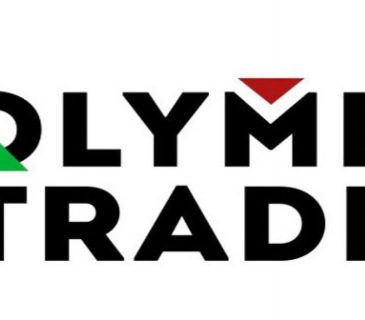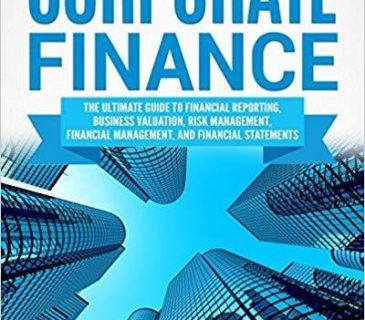Contents
To stabilize the current accounts which would improve the balance of trades by adding more price competition to its exports. Competitive devaluations of currencies are the fallout of a managed regime. In a globalized world, more countries than ever before are vying for businesses and big enterprises to establish facilities everfx review in their nations. Because domestic consumers are less responsive, the decline in imports will be relatively small. Changes in world trade since the first oil crisis of 1973 have caused great changes in the values of currencies. How these could have been dealt with under a system of fixed exchange rate is not yet clear.

These reserves can therefore be fruitfully used to import capital goods and other items in order to promote faster economic growth. In this article we will devops organisation struktur discuss about the advantages and disadvantages of floating exchange rates. In a fixed exchange rate, it is difficult to respond to temporary shocks.
Exchange rate explained
Thus, we examined the trace test with the Bartlett correction for both restricted trends and the restricted constant and the trace test for the unrestricted constant. We selected the median rank value for those three measures at a 0.1 significance level and provided IRF and FEVD within such a model framework . Firstly, productivity growth in the manufacturing sector in the years 2009–2015 significantly exceeded the analogous indicator for the Euro Area (5.7% vs. 3.4% annually) in this year .
If the value of currencies fluctuates, significantly this can cause problems for firms engaged in trade. It will discourage any type of international trade and foreign investment. There is no need to maintain foreign reserves in this exchange system. The government may lack the flexibility that is required to bounce back in case an economic shock engulfs the economy. Since the Central Bank and the Government work in tandem, there are little chances of differences in opinion at the very top.
If domestic inflation is still high at that time, such a policy would only increase the upward inflation pressure and could lead to hyperinflation. Domestic consumers demand foreign currency to pay for imported goods. They then sell the domestic currency and exchange it for foreign currency. Such a situation weakens the domestic currency’s price against the trading partner’s currency . This would make the country’s exports cheaper, thus increasing demand, while at the same time making imports expensive and decreasing demand. A country’s macroeconomic fundamentals affect the floating exchange rate in global markets, influencing the flow of portfolios between countries.
Adjusted R-square takes into account number of parameters, favouring more parsimonious specifications. The relative terms of trade also grew in the period 1999–2015 by 32%, albeit this indicator reached its peak in August 2008—almost at the same time when the “appreciation anomaly” reached its peak . Kelm (2013, p. 395) observed that in the years 1999–2011, the long-term trend for relative TOT and relative disadvantages of a floating exchange rate productivity was positive, while their deviation from trends was correlated negatively. However, this observation is harder to confirm for the years 2011–2015, when the analysed period was extended to those years . Similarly, Kelm’s conclusion (Kelm 2013, p. 396) that the negative deviation in the relative TOT from its trend had a depreciative impact on EUR/PLN is not so obvious for the post-GFC period .
Similarly the central banks that revalued a currency by giving out too little of it in exchange for other currencies would soon be flooded with that currency as it would get relatively large amounts of other currencies. Thus, the possibility of international monetary crisis originating from exchange rate changes is automatically eliminated. The Conference established the International Monetary Fund and the World Bank.
Figure 9.Monthly average EUR/PLN exchange rate and net direct investments on GDP and other net foreign liabilities in GDP expressed in logs between 1 m in 1999 and 12 m in 2015 (see details in Section 3.1). The main conclusions from the analysis cointegration relationship parameter are as follows. Firstly, for PPP models, estimated coefficients for all subsamples suggest that symmetry restrictions occur. Secondly, parameter estimates for more complicated specifications, even with one cointegrating relationship, such as the CHEER-BEER model with three lags, are ambiguous.

Countries need to constantly monitor the market and take action to prevent economic changes from affecting their exchange rate. Apart from China, there are 65 more countries that have adopted the floating exchange rate, including Japan, USA and many of the European countries. Contrarily, a dirty float, also called a managed float, occurs when a floating currency is not dictated completely by demand and supply. It is partially controlled by government intervention, limiting the appreciation or depreciation of a currency within a specific range. A fixed exchange rate always enables you to determine how much of one currency can be exchanged for another currency. The Indian economy was facing a severe crisis in the balance of payments .
Advantages and disadvantages of exchange rate systems
Under the floating exchange rate system the balance of payments deficit of a country can be rectified by changing the external price of the currency. On the country if a fixed exchange rate policy is adopted, then reducing a deficit could involve a general deflationary policy for the whole economy, resulting in unpleasant consequences such as unemployment and idle capacity. This is also called the pegged exchange rate system and does not depend on the fluctuations of market forces at all.
- On the one hand, it could indicate strong spillovers of conventional ECB policy instruments on the Polish exchange market after the GFC.
- However, for the subsample 01 m 1999–12 m 2015, we could observe a “clearly” negative impulse response of EUR/PLN in 1.5-year and 5-year horizons , while in a 3-month horizon, positive impulse response .
- Figure 10.Other net foreign liabilities with regard to GDP —deviation from the trend and real PLN/EUR deflated by PPI in manufacturing expressed in logs between 1 m in 1999 and 12 m in 2015.
- Protection from external shocks – if the exchange rate is free to float, then it can change in response to external shocks like oil price rises.
- For instance, if some foreign investor’s risk, who is planning on buying a government’s bonds increases due to this fluctuation, they will want a higher interest rate on these bonds as a form of compensation for the increased risk.
Governments can do this with a floating exchange rate because it self-corrects any balance of payment disequilibrium arising from domestic policy implementation. For example, policymakers manipulate money circulation for increasing employment, GDP, price stability by using tools such as interest rates, reserves, bonds, etc. They also can either be fixed or vary depending on the supply and demand for credit. The uncertainty of exchange rate fluctuations can reduce the incentive for firms to invest in export capacity. Some Japanese firms have said that the UK’s reluctance to join the Euro and provide a stable exchange rate makes the UK a less desirable place to invest. A fixed exchange rate provides greater certainty and encourages firms to invest.
A dirty float is a floating exchange rate where a country’s central bank occasionally intervenes to change the direction or the pace of change of a country’s currency value. A dirty float is also known as a “managed float.” This can be contrasted with a clean float, where the central bank does not intervene. If a currency is favorable, the floating exchange rate can benefit the country. But due to its volatile nature, investors might not want to take higher risks.
A dirty float happens when the public authority’s money-related principles or laws influence the valuation of its cash. Dirty or overseen floats are utilized when a nation builds up a cash band or money board. Providing greater certainty for importers and exporters, therefore encouraging more international trade and investment.
Advantage of Floating Exchange Rates:
However statistical significance of this impact had been not examined. The quarterly time series was disaggregated to the monthly time series by the use of the automatic interpolation procedure in Gretl Software. Due to a change in the Balance of Payment methodology, data consistent with the new methodology have only been available since 2004. Thus, the impulse response may provide a better picture of the relations between variables. We focus on the EUR/PLN exchange rate, because it is the most important exchange rate for Central and Eastern Europe.
Foreign Reserves are the asset of the Central Bank such as foreign currencies, gold, etc. In the graph below, an increased currency supply from S1 to S2 at the same demand D1 implies that the currency-pair price will depreciate. In contrast, increased demand from D1 to D2 at the same supply S1 will lead to currency appreciation.
Unlike fixed exchange rates, these currencies float freely, unrestrained by government controls or trade limits. A floating exchange rate is a regime where the currency price of a nation is set by the forex market based on supply and demand relative to other currencies. This is in contrast to a fixed exchange rate, in which the government entirely or predominantly determines the rate. It does this to gain back the confidence of big businesses and important investors, which might weaken because of great fluctuations in the market forces.
In comparison, the Forex market’s floating rate is determined by demand and supply and fluctuates constantly. Thus, a floating exchange rate allows a government to pursue internal policy objectives such as full employment growth in the absence of demand-pull inflation without external constraints . Most countries with a fixed exchange rate peg their currency to the US Dollar. These include oil-rich Middle Eastern countries such as Saudi Arabia and Qatar, as well as international financial centres such as Hong Kong. Difficulty in keeping the value of the currency – If a currency is falling below its band the government will have to intervene.
We present estimated coefficient of cointegration relationships and adjustment vectors in Supplementary S4. It allowed us to compare models results with results from different papers . Furthermore, in Supplementary S5, we present R-square and adjusted R-square measures for first differences of logarithms of exchange rate.
Currency Economics – Turkish lira in free-fall despite interest rate rise
This type of exchange rate goes up and down freely according to the laws of supply and demand, but only within a given range. The government will intervene whenever the exchange rate risks going too low or getting too high. However, as a general rule, higher interest rates increase a currency’s value and demand, which raises the exchange rate.
Fixed exchange rates require the Central Banks to set up trading desks and currency boards to manage the currency actively on a daily basis. In case of a floating exchange rate, the central bank does not have to take so many efforts. Instead, it can just passively manage the currency by setting important rates and interfering in the market only when it becomes necessary. The lack of control over floating exchange rates can limit economic growth or recovery. The negative currency exchange rate movements may lead to serious issues. For example, if the dollar rises against the euro, it will be more difficult to export to the eurozone from the U.S.
